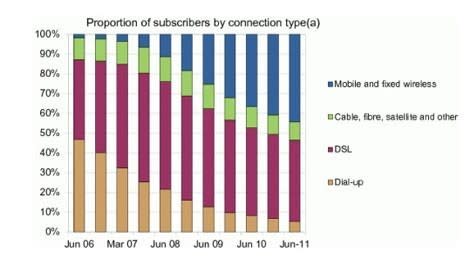Steve Jobs legacy: Real estate agencies now media companies
Not much more can be said about Steve Jobs – he was the man who invented the future. He allowed consumers to move into the digital world where today we as individuals and businesses are much better off for that experience. One quote really stood out in my mind “Jobs concerned himself with making computers work the way people expected them to rather than making people learn how the computer wanted them to work.”
We marvelled at his creations: the MacBook, the iPod, the iPhone and the iPad – never before have we see such technologies that would change the way we conduct our day-to-day business. One only has to drive by a bus stop, or observe the day-to-day behaviours on a train platform in peak hour, where his legacies are connected in some shape or form to us every day, and we’re addicted.
Rupert Murdoch once said, “The internet has been the most fundamental change during my lifetime and for hundreds of years. Someone the other day said, ‘It’s the biggest thing since Guttenberg.’ And then someone else said, ‘No, it’s the biggest thing since the invention of writing’.”
In May this year Google broke the all time online record of reaching 1 billion in that month. Comscore, which collates this data, recorded that Google’s sites rose by 8.4% from 931 million (in May 2010) to just over a billion – 1,009,699,000.
In Australia our online trending is also changing – the Australian Bureau of Statistics released the latest June 2011 internet activity revealing that for the first time wireless is more popular than copper as the most preferred form of broadband in Australia.

At the end of June 2011, there were 10.9 million internet subscribers in Australia (excluding internet connections through mobile handsets). This represents annual growth of 14.8% and an increase of 4.4% since the end of December 2010.
The phasing-out of dial-up continued, with 95% of internet connections being broadband.
Australians continued to access increasingly faster download speeds, with 87% of access connections offering a download speed of 1.5 Mbps or greater.
Mobile wireless internet (excluding mobile handset) connections (44%) now exceed Digital Subscriber Line (DSL) connections (41%) in Australia. Mobile wireless (excluding mobile handset connections) was the fastest-growing internet access technology in actual numbers, increasing from 4.2 million in December 2010 to 4.8 million in June 2011.
Overall, the number of Australians using some form of fixed-line service for their broadband connections remained just ahead of wireless once cable services were included.
It is becoming most obvious that we feel the need for speed, with Telstra just announcing its new mobile broadband network 4G. Unfortunately it is only available in capital cities, airports and some regional areas – those outside will have to stick with the 3G. Download speeds on the new network fluctuates from 2 megabits per second (Mbps) to 40 Mbps, which is 25 times faster than the previous speeds available on the 3G network. The number of consumer subscriptions for wireless and modem broadband jumped from 6.7 million to 9.6 million for the year to June 2011. Again wireless was the star performer with subscriptions jumping from 6.7 million to 9.6 million in 12 months.
This trending makes it difficult to see how the NBN Co will ever be able to break even (it requires a 71% consumer subscription to break even) for its fibre-optic installation costing taxpayers $49.5 billion.
Real estate businesses have benefited enormously from the Steve Jobs legacy, as the iPhone and iPad launches forced (most) real estate businesses to develop mobile and iPad websites so consumers could enjoy a happier experience. The most notable changes are that consumers have developed an increasing love for mobile phone apps and tablets (iPads), which explains why wireless has overtaken fixed line, and I can’t see this changing anytime soon.
The next big thing in the real estate world will be real estate agents and agencies engaging with their demographic markets on their very own .tv channels (some in Australia have already started rolling out this platform). Steve Jobs’ vision was all about delivering the visual presentation by using online to electrify your audiences.
Yes – Steve Jobs invented the future, where today real estate agencies are now expected to be media companies as well. The new online lifestyle is challenging everyone today – I hope that the Steve Jobs legacy will provide more clues on where we need to be heading and how we get there. For the real estate industry it is becoming very clear that video is now a must with agency and property presentations.
We keep reading “Comparing a Steve Jobs presentation to most presentations is impossible — he’s in a league all his own. Apple’s chief executive is arguably the most charismatic pitchman in business today. His presentations are brilliant demonstrations of visual story telling that turn customers, employees, and the entire computer industry into evangelists.”
We can only learn from the best.
Robert Simeon is a director of Richardson Wrench Mosman and Neutral Bay and has been selling residential real estate in Sydney since 1985. He has also been writing real-estate blog Virtual Realty News since 2000. The RWM real estate model has sold in excess of $1 billion in database sales globally.